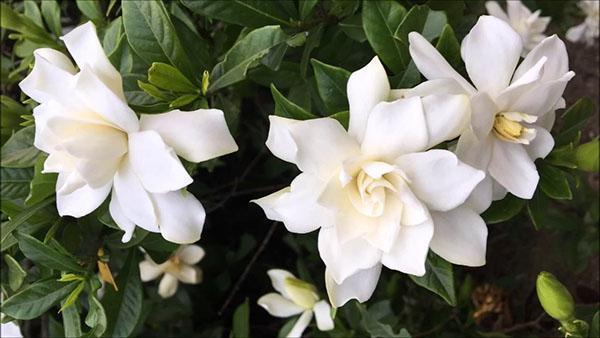Gardenia whims - there is a solution
 The jasmine-like culture is in demand due to its decorative properties, as well as its heady scent. Nevertheless, the whims of gardenias drive many to madness. It can be difficult to please this beauty. If you know some of the features of the plant, you can quite get unique flowering in her performance.
The jasmine-like culture is in demand due to its decorative properties, as well as its heady scent. Nevertheless, the whims of gardenias drive many to madness. It can be difficult to please this beauty. If you know some of the features of the plant, you can quite get unique flowering in her performance.
Purchased seedlings are always transplanted, because transportation conditions lead to diaper rash and root rot.
When the plant is sick, it is transferred to a smaller pot to create a comfortable environment.
Land issues
All problems start with incorrectly selected soil. The flower prefers light, but moderately acidic types of soil. Therefore clean peat is contraindicated for him. An indispensable component in such a soil mixture is garden loam. Each ingredient is taken in equal parts.
Cuttings are carried out from December to March. Rough and young branches are cut off 8-10 cm in length. You can't do without rooters and a greenhouse. In the spring they are transferred to pots with a diameter of 7 cm.
Among other things, charcoal is added in small doses so that the earth does not compact and sour. Oak bark is taken as drainage, which often serves as a source of nutrition for the roots. This substrate greatly optimizes the moods of the gardenia. In order for a fragile seedling to take root, you need it:
- periodically shade;
- keep warm;
- spray;
- pour gently with warm water.
The culture neck should not be buried. When transplanting, the roots of the plant are distributed so that a skirt on a porcelain doll is obtained - in a semicircle.
What caused the whims of gardenia?
The answer is obvious - the wrong conditions of detention. First of all, the jasmine culture needs a warm microclimate. Nevertheless, the temperature should be kept in the range from 18 to 24 ° C. If it is too hot, the moisture will quickly evaporate, and the plant will begin to attack various pathogenic organisms.
To protect the flowerpot from spider mites and other pests will help:
- regular spraying;
- pallet / pots with moss at the bottom;
- regular watering.
Keeping such humidity, the florist stimulates the full development of culture. It is important to remember that a temperature of 22-24 ° C does not contribute to the formation of flower buds. Therefore, it is lowered to 16 ° C at night, and 18 ° C during the day. Experienced gardeners make good use of the fall season and place the pot in a cool room. But as soon as the buds are formed, the gardenia is again transferred to a warm room.
From the moment the buds are laid and during flowering, the flowerpot should be watered abundantly, as well as mineral fertilizers. Better, of course, mullein. In this case, the culture is highlighted.
At the same time, the buds fall off due to improper care. Bay, dryness, dry air, sharp temperature fluctuations, as well as constant turns of the pot are destructive for the flower. As you can see, the vagaries of gardenia can be prevented if it is treated correctly. See in the photo gardenia!